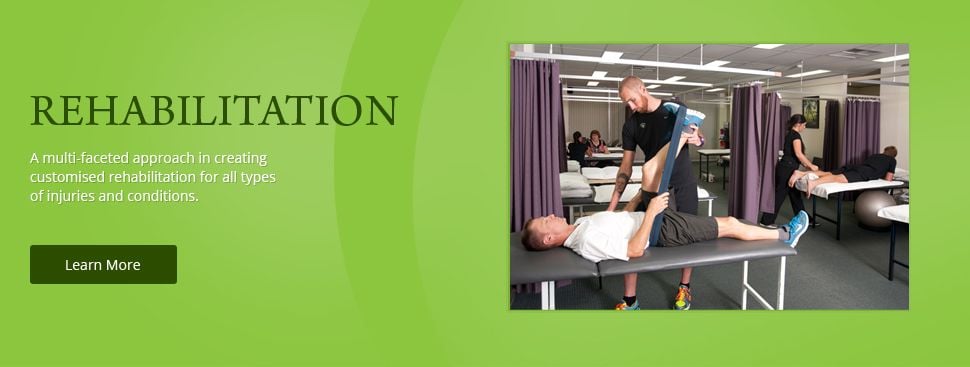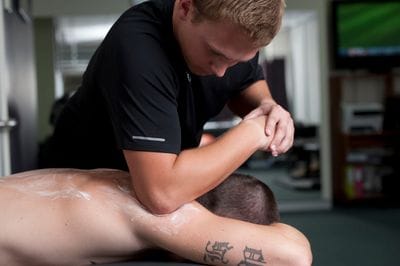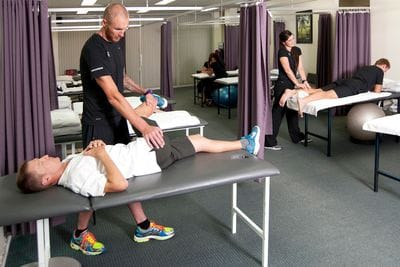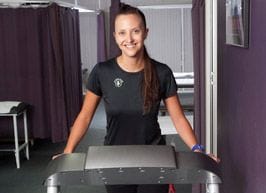Exercise Physiology
Individualised and structured exercise programs, specialised in return from injury, athletes or individuals wanting to improve performance, strength, power, speed, endurance, flexibility and/or overall lifestyle.

Preventing Low Back Pain
Over 80% of the population will suffer from lower back pain at some point in their lives. There is no proven way to 100% prevent low back pain BUT there are some things you can do that might help to prevent it and/or aid in a faster recovery or less severity of low back pain.
PREVENTING LOW BACK PAIN
REGULAR EXERCISE
It has been widely proven that exercise helps to both avoid injury as well as aiding in recovering from injury. Low back pain is no different. Specific physical activity prescribed by a Physiotherapist/Exercise Physiologist can help to ease inflammation and muscle tension.
LEARN TO LIFT SAFELY
Don't bend over from the waist to lift. Bend your knees and squat, activate your core, keep the object you are lifting close to your body as you stand up. Don't twist your body while lifting.
POSTURAL AWARENESS
Being aware of your posture throughout prolonged positioning may assist in reducing the likelihood of a low back injury. Research has shown that neither sitting nor standing is worse or better for you, but prolonged exposure to either of these positions is what causes pain and/or injury.
When sitting, keep your knees in line with or slightly higher than your hips. Prop your feet on a stool if you need to. If you must stand for a prolonged period, keep your head up, shoulders back and your core activated.
WEARING APPROPRIATE SHOES
Avoid wearing high heels, heels cause your centre of gravity to shift and can lead to excess strain in your lower back. A flatter shoe (though not too flat!), with a cushioned sole can help to reduce the pressure on your low back and can keep your centre of gravity in a more ideal position.
MAINTAINING A HEALTHY WEIGHT
Excess weight, especially around the mid-section, can cause excess stress to the lower back, similar to high heels, this extra weight/size around your midsection can shift your centre of gravity.
Research has shown that losing only 5kg, regardless of your starting weight, can reduce your low back pain by up to 50%.
REVIEW YOUR SLEEPING POSITION
We generally don't recommend changing your sleeping position because it is very difficult to control which position your body goes in to when you're asleep. However, if you are prone to back pain, the use of some well positioned pillows may assist in reducing your back pain while still being able to maintain your chosen position to sleep in.
Side sleepers: knees bent with a pillow between your legs
Back Sleepers: pillow underneath your knees and/or lower back
Tummy Sleepers: this is the position that will be particularly hard on your back, pillows underneath your hips!
ADDRESSING SOCIAL FACTORS
ARE YOU A SMOKER? QUIT!! Smoking has been shown to restrict the flow of nutrient-rich blood to the spine and surrounding structures and nicotine can affect the manner in which the brain processes sensory stimuli and it's perception of pain, in other words, cigarettes affect the way the brain sends its pain signals. Research has shown that smoking, by itself, raises the risk of debilitating back pain by approximately 30%
HEALTHY DIET A healthy diet aids in healthy weight management and ensures that your body is receiving all the nutrients it requires to maintain, build and repair healthy joints and muscle!
MANAGE STRESS Stress can wreak havoc on all aspects of your life and your body! If you have a high stress job/life, it is important to find healthy ways to un-wind and de-stress. Some simple examples include creating a "tech-free" hour where you completely log off from all things electronic, reading, listening and/or playing music, exercising.


)
)
)




